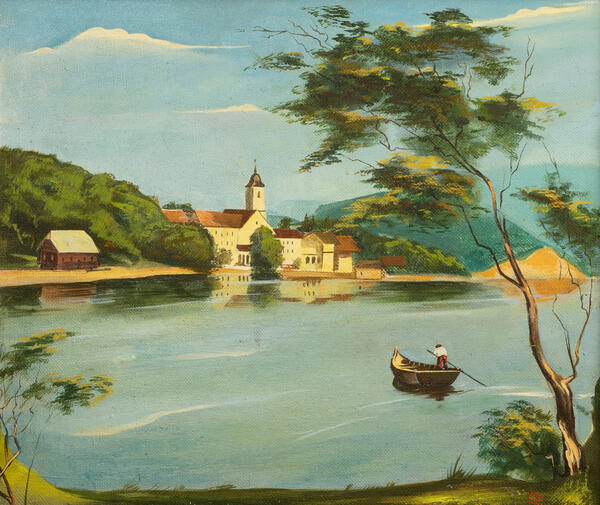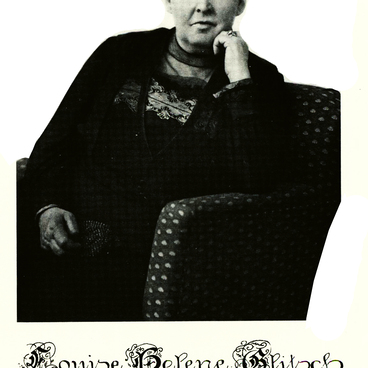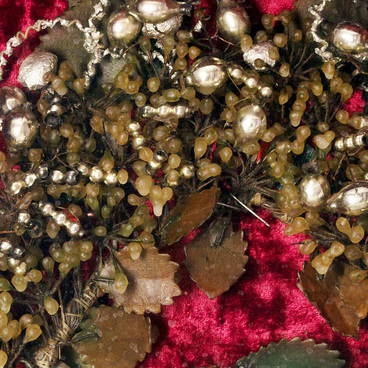In the museum-reserve ‘Old Sarepta’ there is a painting called St. Wolfgang, that is ‘Saint Wolfgang’. Its author is an unknown artist of the 20th century who reproduced the plot of an old German engraving.
In the late 19th - early 20th centuries, the Sareptians decorated their homes not only with sayings from the Bible and portraits of Martin Luther, but also with paintings of views of Germany and other European countries brought from travels and visits to relatives. The painting ‘St. Wolfang’ gives an idea of the decoration of the Sareptians' dwelling and their taste preferences.
Saint Wolfgang is one of the most revered saints in German-speaking Europe. He was canonized in 1052. The painting depicts a small town named after him in Austria, or rather in one of its most picturesque corners of the Salzkammergut, also known as the ‘land of lakes’.
St. Wolfgang was founded at the end of the 10th century on the shores of Lake Wolfgangsee, next to the church that St. Wolfgang built here in 976. This church is the central object of the painting.
An interesting legend is connected with the church construction. They say that the devil helped Wolfgang in its construction. The priest could not choose a place for the temple for a long time. Then he decided to build a church in the place where his ax would fall, and the ax fell right on the shore of the lake. This upset Wolfgang, as it was not easy to build a church on the water’s edge. The devil offered to help in the construction, but in exchange he demanded the soul of the one who would enter the new church first.
The church was soon built. During the construction, Wolfgang prayed fervently, as he did not want anyone’s soul to die. God heard his prayers and arranged it so that the wolf ran into the newly built church first. The devil, without understanding, grabbed the beast and dragged him through the roof. Perhaps the emergence of this legend was facilitated by a mysterious hole in the roof of the church, the origin of which no one knows for sure. There are frescoes depicting the plot of this legend.
The church became a place of mass pilgrimage for faithful. One more interesting feature is that the church has two altars. Initially, the altar in the church was built in the Gothic tradition, as in many other churches in Europe. Later, when, by order of the Pope, the Gothic altars were changed to Baroque ones, it was decided not to destroy the Gothic altar in the church of St. Wolfgang. Since then, both the Gothic and Baroque altars have remained in the temple.
Thanks to the picturesque surroundings of St. Wolfgang and its favorable climate, this place has enjoyed great popularity among European aristocrats for several centuries. Many noble persons of European states came here for treatment and recreation.
In the late 19th - early 20th centuries, the Sareptians decorated their homes not only with sayings from the Bible and portraits of Martin Luther, but also with paintings of views of Germany and other European countries brought from travels and visits to relatives. The painting ‘St. Wolfang’ gives an idea of the decoration of the Sareptians' dwelling and their taste preferences.
Saint Wolfgang is one of the most revered saints in German-speaking Europe. He was canonized in 1052. The painting depicts a small town named after him in Austria, or rather in one of its most picturesque corners of the Salzkammergut, also known as the ‘land of lakes’.
St. Wolfgang was founded at the end of the 10th century on the shores of Lake Wolfgangsee, next to the church that St. Wolfgang built here in 976. This church is the central object of the painting.
An interesting legend is connected with the church construction. They say that the devil helped Wolfgang in its construction. The priest could not choose a place for the temple for a long time. Then he decided to build a church in the place where his ax would fall, and the ax fell right on the shore of the lake. This upset Wolfgang, as it was not easy to build a church on the water’s edge. The devil offered to help in the construction, but in exchange he demanded the soul of the one who would enter the new church first.
The church was soon built. During the construction, Wolfgang prayed fervently, as he did not want anyone’s soul to die. God heard his prayers and arranged it so that the wolf ran into the newly built church first. The devil, without understanding, grabbed the beast and dragged him through the roof. Perhaps the emergence of this legend was facilitated by a mysterious hole in the roof of the church, the origin of which no one knows for sure. There are frescoes depicting the plot of this legend.
The church became a place of mass pilgrimage for faithful. One more interesting feature is that the church has two altars. Initially, the altar in the church was built in the Gothic tradition, as in many other churches in Europe. Later, when, by order of the Pope, the Gothic altars were changed to Baroque ones, it was decided not to destroy the Gothic altar in the church of St. Wolfgang. Since then, both the Gothic and Baroque altars have remained in the temple.
Thanks to the picturesque surroundings of St. Wolfgang and its favorable climate, this place has enjoyed great popularity among European aristocrats for several centuries. Many noble persons of European states came here for treatment and recreation.



